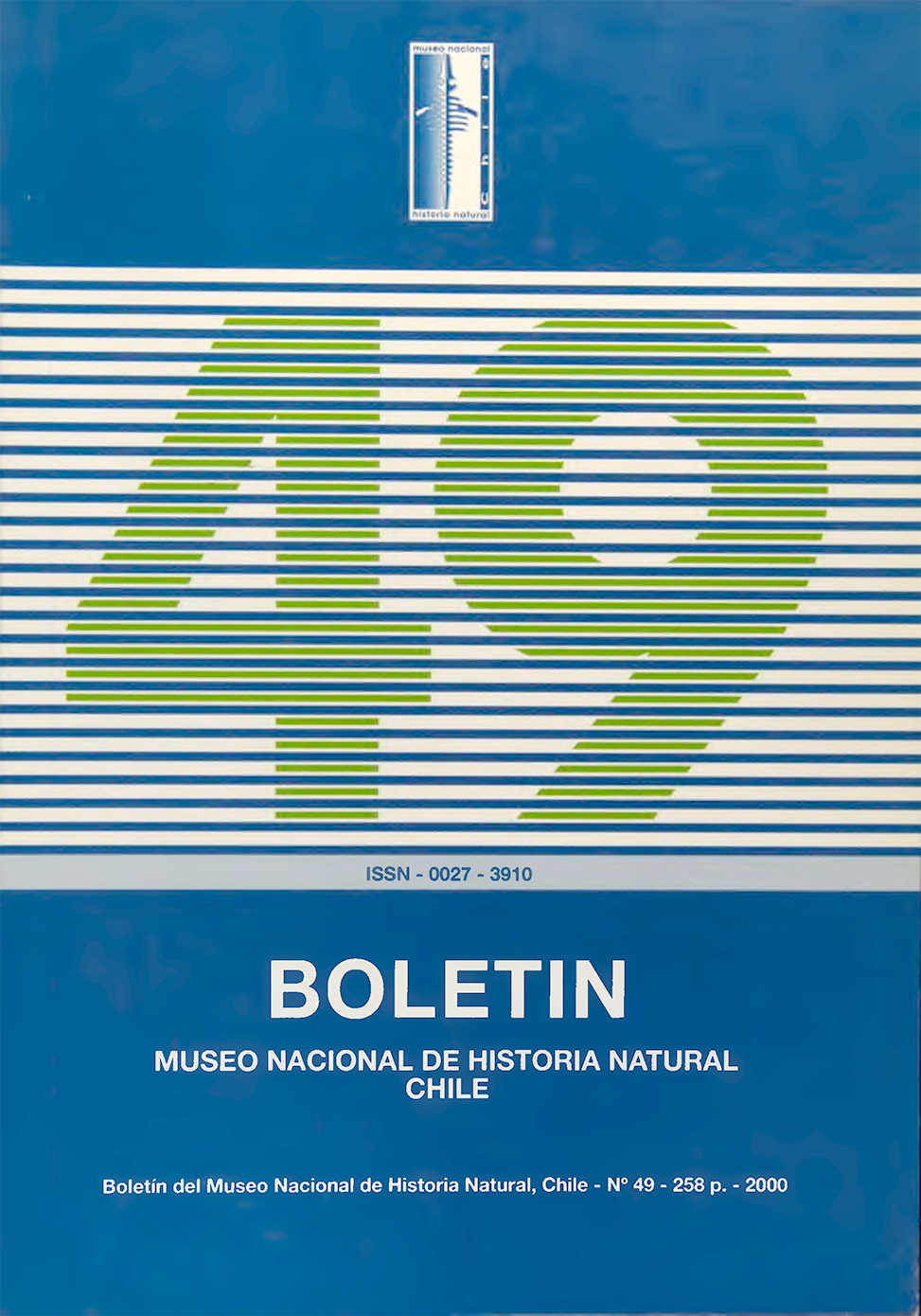Caracterización florística y pisos de vegetación en los andes de Santiago, Chile central
DOI:
https://doi.org/10.54830/bmnhn.v49.2020.345Keywords:
Central Chilean Andes, Rio Maipo watershed, Mediterranean Chile, Endemism, Andean Flora, Andean vegetationAbstract
The results of a floristic and vegetational study of the upper watershed of the Rio Maipo, in the Central Chilean Andes (33°34'-34°14' S - 69°48'-70°30' W) are presented. The altitudinal transects were established along the slopes of the following canyons: Rio Maipo (1.200-3.400 msnm), Rio Yeso (1.200-4.000 msnm) and Estero El Sauce (800-2.200 msnm). The vascular flora comprises a total of 357 species, grouped in 209 genera and 75 families. Native non endemics are the best represented (54%), although the endemics are rather high (29%). The endemism level shows a constant decrease related to the altitude, because the higher belts are more influenced by the species exchange with the oriental slope of the Andes. For the zonal vegetation five altitudinal belts were identified: a) Sclerophyllous Shrubland, b) Subandean Shrubland, c) Andean Shrubland, d) High Andean Steppe, e) High Andean Desert. The mean cover of the vegetation tends to decrease towards the high altitudinal transects, from 100% near 800 m asl to 5% at 3.400 m asl. In the Rio Maipo transect the extension of the Andean Shrubland is remarkable, because of the moderate slope that facilitates the establishment of two dominant arborescent species, Adesmia obovata and A. pinifolia, rare to Chile. The geographical distribution analysis of the species, shows that the andean-mediterranean elements predominate in the higher belts of the transects, whilst the central-chilean elements predominate in the lower belts. This fact shows the transitional nature of the Subandean Shrubland, where the central-chilean elements are replaced by the andean-mediterranean ones.
Downloads
Downloads
Published
How to Cite
Issue
Section
License

This work is licensed under a Creative Commons Attribution-NonCommercial-NoDerivatives 4.0 International License.




